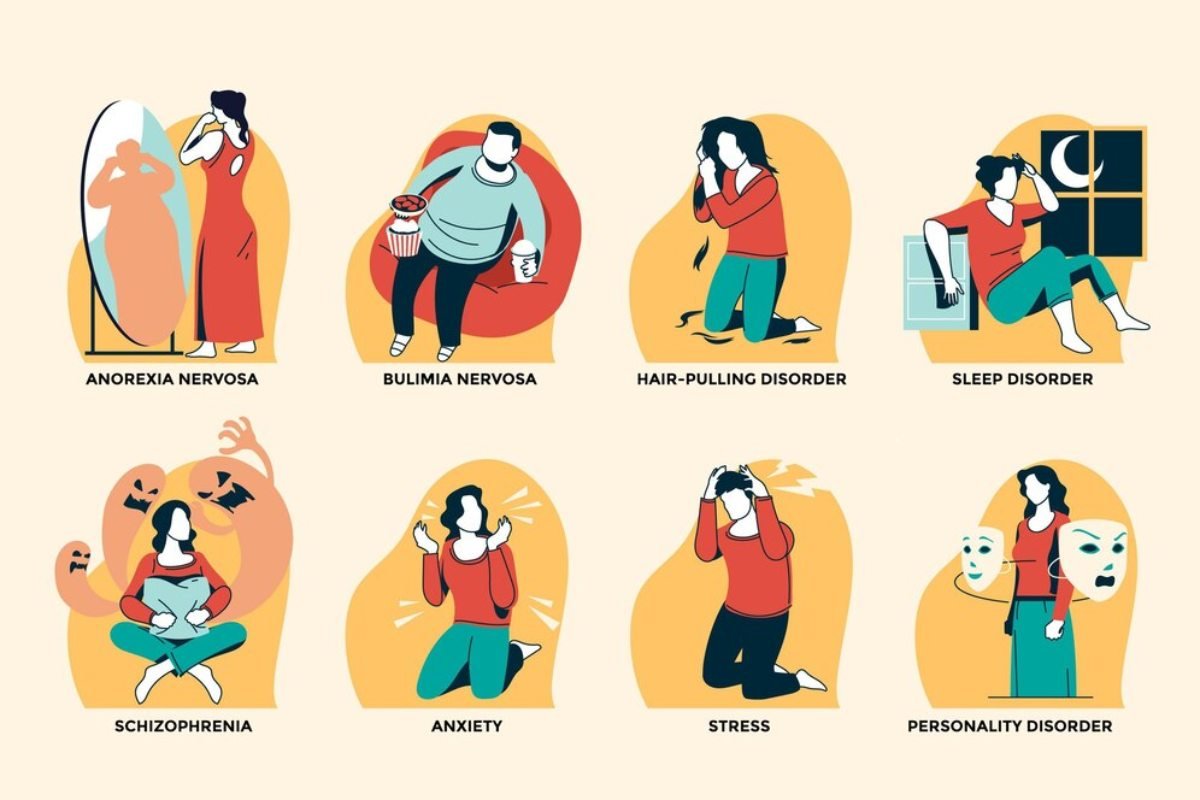Mood disorders are psychological conditions that mainly refer to the state of an individual. It has been identified to interrupt life drastically, bringing about influences in relations, working, and well-being in general. Knowing the list of mood disorders that are common today requires knowing their symptoms to seek correct assistance.
The blog provides an insight into the most commonly known mood disorders, including causes and symptoms, with which you might identify an issue with you or the person around you.
What Are The Most Common Mood Disorders?
Mood disorders encompass a range of conditions characterized by persistent changes in mood. Here are some of the most common mood disorders:
1. Major Depressive Disorder (MDD):
It is experienced as persistent feelings of sadness, hopelessness, or being devoid of interest in an activity where one used to have delight or happiness.
Symptoms include changes in appetite, sleep disturbances, fatigue, difficulty concentrating, or thoughts of suicide.
2. Bipolar Disorder:
This consists of extreme mood swings to include emotional highs, namely mania or hypomania, and lows, being depression.
These shifts can affect anyone’s energy levels, activity levels, sleep patterns, and ability to think clearly about things. There are more than one type of Bipolar Disorder:
- Bipolar I Disorder: Characterized by the presence of manic episodes lasting at least seven days or less if hospital care is required as a result of symptoms of mania.
- Bipolar II Disorder: This is characterized by less severe mania or hypomania that lasts at least four days.
- Cyclothymic Disorder: Characterized by numerous periods of hypomanic symptoms and periods of depressive symptoms that last for at least two years.
3. Disruptive Mood Dysregulation Disorder: (DMDD):
A disruptive mood disorder that generally begins in children or adolescents. This is a severe recurrent temper outburst greatly out of the context in which is given and a persistent irritability or anger.
4. Premenstrual Dysphoric Disorder(PMDD):
PMDD is a very severe form of PMS that is characterized by moderate to extreme mood swings, irritability, depression, and/or anxiety by the week preceding menses. Symptoms are relieved shortly after the onset of menses
5. Postpartum Depression:
This occurs after delivery. It is emotional as well as physical in new mothers. Possible symptoms include huge mood swings, feelings of exhaustion, and feelings of inadequacy.
6. Substance-Induced Mood Disorder:
This is caused by the use of drugs or alcohol or withdrawal from these substances that result in mood disturbances.
Examples of Mood Disorders
Understanding the different examples of mood disorders helps people identify their symptoms.
Major Depressive Disorder: Characterized by persistent feeling of deep sadness or despair, weeks or months.
- Bipolar Disorder: Manic episodes of high energy followed by depressive episodes.
- Disruptive Mood Dysregulation Disorder: Severe temper tantrums in children that are grossly inappropriate for the situation.
- Premenstrual Dysphoric Disorder: Severe irritability and depression that occur just before menstruation.
- Persistent Depressive Disorder: Chronic low-grade depression lasting for years.
What is anger?
While discussing mood disorders, it is important to consider the fact that anger also may be a predominant emotional response that is connected with different disorders.
Anger is a normal emotion; however, it becomes unhealthy if it manifests in aggressive or emotive behaviour.
Causes of Mood Disorders
Mood disorders are complex with numerous causes and risk factors. Some causes include the following;
- Genetic: This increases the possibility of inheriting mood disorders.
- Biological factors: These are imbalanced neurochemicals in the brain such as serotonin, dopamine, and norepinephrine, which affect an individual.
- Environmental Factors: These factors include: major loss or death, being abused, or physical injury that is traumatic and which causes psychological damage and disorder.
- Medical Conditions: Chronic illnesses or hormonal changes can also be a cause of depressive symptoms.
- Substance Abuse: Alcohol and drug use can contribute to or cause mood disorders.
Symptoms of Mood Disorders
The symptoms of mood disorders are recognized to help in early intervention. The common symptoms include:
- Prolonged sadness or low mood
- Loss of interest in activities once enjoyed
- Changes in appetite or weight
- Sleep disturbances (insomnia or sleeping too much)
- Fatigue or loss of energy
- Difficulty concentrating
- Feeling worthless or excessive guilt
- Irritability or anger
- Thoughts of death or suicide
How To Identify If You Have a Mood Disorder
If you think that you might have a mood disorder, consider these questions:
- Do you often feel sad or hopeless?
- Have you lost interest in activities you once enjoyed?
- Do you have a noticeable alteration in your sleep patterns?
- Do you get tired without a physical explanation for it?
- Have you thought about attempting suicide or hurting yourself?
Frequently Asked Questions (FAQs)
Q1: Which Are The Most Common Mood Disorders?
Major depressive disorder (MDD), bipolar disorder, disruptive mood dysregulation disorder (DMDD), persistent depressive disorder (dysthymia), premenstrual dysphoric disorder (PMDD), postpartum depression, and substance-induced mood disorder are some of the most common mood disorders.
Q2: What Does Anger Mean in The Context of Mood Disorders?
Anger is an emotion that can be associated with different mood disorders if it becomes extreme or uncontrollable. It may appear as irritability or aggressive behaviour.
Q3: How Can I Know If I Have a Mood Disorder?
If you frequently experience feelings of sadness, hopelessness, and a loss of interest in activities, along with sleep disturbances, fatigue, difficulty concentrating, or thoughts of self-harm, you might be diagnosed with a mood disorder. It’s important to consult a professional for an accurate diagnosis.
Conclusion
Understanding the list of common mood disorders, their causes, and symptoms is crucial to recognizing potential issues early.
When you or someone else around you is experiencing mood-related challenges, you should not hesitate to reach out for help because this can lead to good-quality treatment options.
